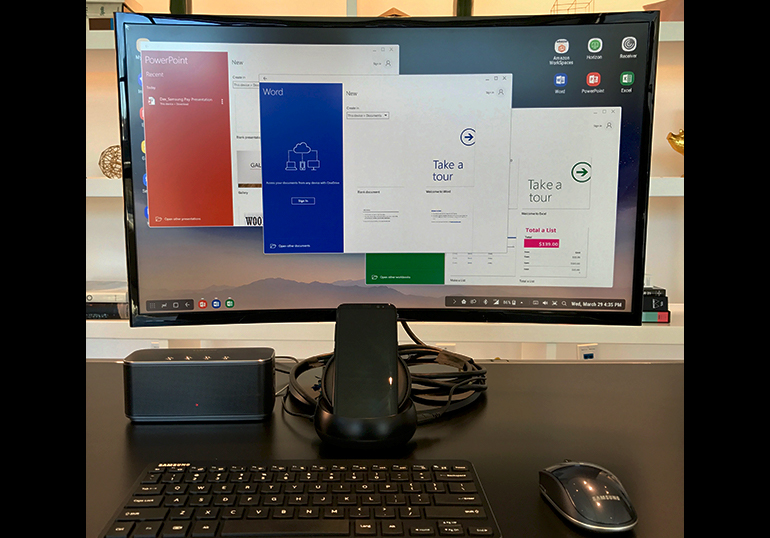Choosing sides in the smartphone battle for the desktop


Samsnug DeX showing Microsoft Office. (Image: Michael Krigsman)
When Microsoft announced its partnership with Qualcomm that would allow ARM-based Windows to run x86 apps, it likely had more on its mind than thinner, lighter, and cheaper laptops. For years, the company had fought back the threat of a tablet market that stood to cannibalize laptops by embracing touch interfaces with Windows 8 and refining them with Windows 10. But it sought to get further in front of the threat that smartphones could provide by turning Windows Phone into a vessel for a desktop experience with Continuum for phones.
When connected to a monitor, keyboard, and mouse, Continuum makes a phone act like a PC on the surface. There's just one main problem: It can't run legacy Windows apps. In this regard, Continuum repeats the mistakes of Windows RT, Microsoft's ARM-based offshoot of Windows 8, which was a huge flop for Microsoft and its partners. But a Qualcomm-based phone running the new version of Windows would be able to run those apps and create a relatively complete PC experience.
Microsoft, of course, isn't the only company that has considered using a phone as a Trojan horse for a desktop experience. Some of these, like Motorola's Atrix 4G of 2011, which used Linux for its desktop mode, were tied to specific hardware. More recently, there's been a rash of Android apps that can host their own desktop experience. These include Remix Singularity from Jide, a company that has previously focused on making the Android experience more like Windows, Sentio (formerly Andronium), which markets its own companion laptop shell, Leena, and Auxens Oxi.
Of course, the biggest player to enter the Android desktop experience has been Samsung, which introduced its DeX experience with the S8. DeX, for which Samsung has developed a companion dock, has gone the extra mile in working with vendors. Microsoft and Adobe have modified their Android apps to support Windows-like user interface features such as fully resizable windows. In contrast, many Android apps in other environments can only toggle between two window sizes based on their tablet and phone resolutions.
That illustrates one of the weaknesses of Android on the desktop, which Google may be addressing via Android apps in Chrome or a new OS that merges the two or simply ignores. The challenge of trying to master the transition between mobile and desktop proved too much for Ubuntu, which recently threw in the towel on its mobile efforts.
That brings us back to Microsoft. Continuum plus broad Android support plus Windows on Snapdragon all seem to add up to a version of Windows Continuum that could be embedded inside of Android, launching forth onto the desktop from the guts of an Android phone like a chestburster from the movie Alien. Already Samsung has teamed up with virtualization companies such as Citrix and VMWare to allow access to hosted Windows desktops within DeX. The question is whether Microsoft could offer a local Windows experience the confines of Google's developer terms and how it might try to work around that if it could not.
Samsung Australia demos Galaxy S8 with DeX
See also: